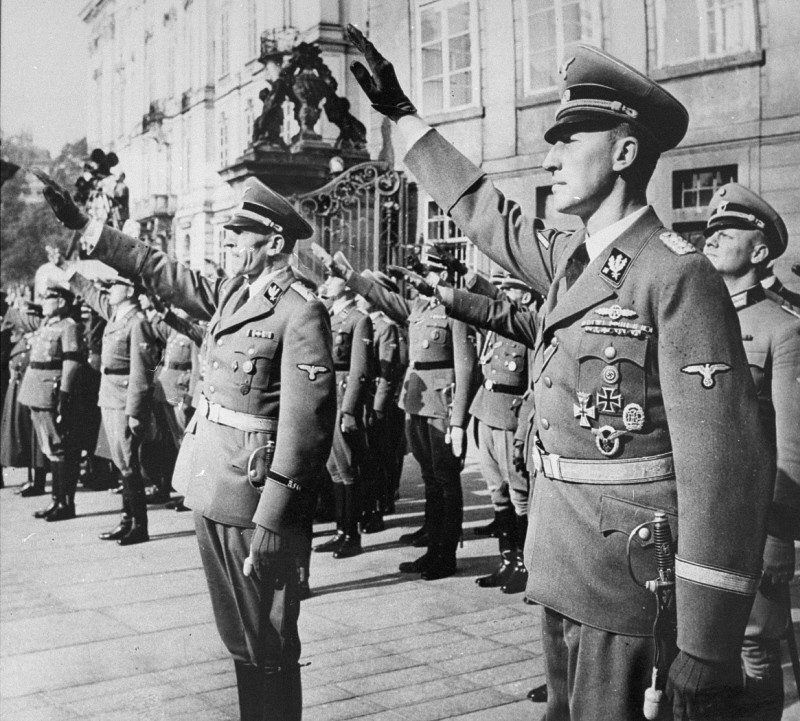
Wannsee Protocol
The Wannsee Protocol is one of the most important surviving German documents on the Holocaust.

The Wannsee Conference took place on January 20, 1942. It was chaired by Reinhard Heydrich, who was chief of the Reich Security Main Office (Reichssicherheitshauptamt; RSHA). At the conference, Heydrich outlined the expansion of Nazi mass murder to encompass 11 million Jews in Europe. The carefully revised minutes of the conference are known as the Wannsee Protocol.
The protocol was compiled, and heavily edited, by Adolf Eichmann from notes taken during the meeting. It is not a word-for-word transcript of the conference, but instead the carefully revised minutes of the meeting. One prominent Holocaust scholar has argued that the protocol should be read as guidelines approved by Reinhard Heydrich and the RSHA.
The protocol identifies the participants at the conference. It also indicates their agreement to collaborate on a continental scale in the "Final Solution to the Jewish Question," in other words, mass murder. While the exact words of the attendees are not known, the protocol records no voiced opposition to the plan. Heydrich used the meeting to strongly convey to the other governmental and Nazi Party representatives that the chief responsibility for solving the "Jewish Question" rested solely with his office.
The Wannsee Protocol was reproduced and disseminated to leading officials in the German government and Nazi Party. However, only one surviving copy has surfaced to date. It belonged to Martin Luther, an Under Secretary in the German Foreign Office, who negotiated with Germany’s allies to deport their Jews to Nazi killing centers. US troops discovered the document in April 1945 among the files of the German Foreign Office, which had been evacuated from Berlin and other German cities to the countryside to prevent their destruction in the heavy Allied bombing raids. In January 1945, the German government ordered that all secret and top secret government records be destroyed if it appeared that they were in danger of falling into enemy hands. Fortunately, the Foreign Office files survived. After securing the documents, US forces transported them to Berlin, where they were examined and often microfilmed.

In late 1946, the Wannsee Protocol came to light among these files. It was discovered by Kenneth Duke, a member of the American staff responsible for microfilming the documents. In March 1947, he alerted Dr. Robert Kempner. Kempner was a German-born Jewish refugee serving as the US prosecutor in the Ministries Trial, one of the Subsequent Nuremberg Proceedings. In preparation for the legal proceedings, Kempner also questioned several of the German officials who attended the Wannsee Conference. Prosecutors cited the Protocol in at least two of the Subsequent Nuremberg Proceedings.
The Wannsee Conference and its protocol also came up during the trial of Adolf Eichmann in Jerusalem in 1961. The defendant was questioned about his role in preparing the meeting and the creation of the document. Eichmann admitted his role in the preparation of the conference and for maintaining the official record of the meeting. During the meeting, a secretary took stenographic notes of the proceedings, which Eichmann then revised, removing what he called "vulgarisms" and changing the text to reflect more "official language." The summarized version of the conference was then passed on to Heydrich for review and comment.
Holocaust scholars have long recognized the significance of the Wannsee Protocol as a crucial piece of evidence for understanding the evolution of Nazi decision making regarding the Holocaust and the bureaucratic aspects of the Hitler regime. In recent decades, historians have unearthed documents from the archives of the former Soviet bloc nations that have helped to better contextualize the Wannsee Conference and flesh out the text of the protocol.
Footnotes
-
Footnote reference1.
Peter Longerich, "The Wannsee Conference in the Development of the 'Final Solution,'" Holocaust Educational Trust Papers, Vol. 1, no. 2, (1999/2000), 1-17, 8.

